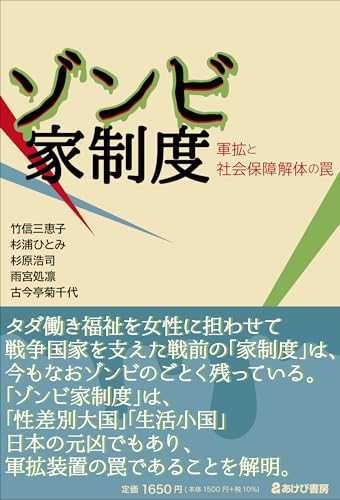In addition to Tokyo Medical University, other schools also have a quota for restricting the proportion of female students. Since 2011, Tokyo Medical University allegedly manipulated the scores of entrance examinations so as to keep the ratio of female students below 30%. The girls’ written examination scores were reduced. This injustice was revealed this past summer and has been widely talked about.
However it appears that such cases were not limited to universities.
Similar injustices can be seen in the entrance examinations to Tokyo Metropolitan public high schools. In some cases, female examinees who scored higher than successful male examinees are not admitted because the enrollment system sets a separate quota for boys and girls. As a result, boys are treated more favorably than girls.
20% of school principals, however, responded that they thought it was unnecessary to relax the strictly separated quota system. Since girls usually get higher scores than boys, the gender biased enrollment system is disadvantageous to girls. In 1998, with an aim to rectify the conspicuous gap in the lowest admissible points between girls and boys, a new system was introduced to correct this inequality by passing or failing, regardless of gender, based solely on the score of the applicants. This reform has been applied only to 10% of the total number of students to be registered in the year, and yet some people still maintain that such a rectification is not necessary.
According to a report from the fiscal year 2018 issued by the Study Committee for Enrollment Selection of Tokyo Metropolitan High Schools, about 20% of 53 junior high school principals who responded to a questionnaire seemed reluctant to admit that some corrective measure is necessary. There are several reasons why they think that the existing system should not be deregulated:
Many more girls than boys would receive the benefits of such deregulation and pass the entrance examination. This might adversely affect the status of private high schools for girls, which exist in considerable numbers in Tokyo. It would cause a problem for them as public schools would consequently take female applicants away from the girls’ high schools in a private sector. Girls tend to be listed high up in admission test score rankings. Therefore, if an enrollment quota is unanimously applied to girls and boys combined and the selection is made based solely on test scores, the male-female ratio would be more unbalanced than it is now, causing inconveniences in the use of school facilities. If the separate quota system is actually deregulated, female enrollees would increase in many public schools. The existing private schools have more female applicants enrolled as they have more rooms for girls in their quota.
On the other hand, some principals of high schools where deregulation was actually introduced have somewhat different opinions:
As the gap in achievements between girls and boys is narrowed, classes could be managed more efficiently, pushing up the students’ academic standards. Deregulation could ease the dissatisfaction caused by unfair judgement when the result of entrance examination differs between girls and boys even if the scores they got were same. After deregulation, more girls than boys have been enrolled, and the ratio of girls and boys became unbalanced. This situation could cause inconveniences to the actual practice of physical education and school events. It sometimes affects extra-curriculum activities as well.
When I was young, the ratio of girls was half of that of boys at high school and in university, the ratio between girls and boys was one to nine, and yet it was surprising enough to be covered in a news report that the ratio of girls among total successful applicants exceeded 10%. I have been working in an environment where male colleagues are dominant. I don’t remember any experience of quantitative equality between men and women having been taken into consideration.
According to the above-mentioned Committee report, the deregulation will be maintained in a limited number of high schools where it is acknowledged as truly necessary because it contributed to a certain extent to correcting the discrepancy in the lowest admissible points between girls and boys.
I don’t know what kind of school would be qualified as schools where the deregulation is “acknowledged as truly necessary.” Isn’t it arguable whether public schools could deprive girls of educational opportunity based on gender?
Especially when parents’ expectations for higher education are still different between sons and daughters, the validity of fixing a quota toward preventing girls from receiving higher education is quite questionable.
In my view, the discriminating quota system of Tokyo Metropolitan high schools is no different from the unfair treatment of female applicants of Tokyo Medical University, except for the fact that in the former applicants are informed in advance of the respective numbers of the gender-based quota.
Original Article: https://wan.or.jp/article/show/8007
https://news.yahoo.co.jp/byline/sendayuki/20180803-00091738/
Written by SENDA Yuki, professor of sociology, Musashi University
Summary Translation by FUKUOKA.A.A
2018.10.15 Mon
カテゴリー:Essays
 慰安婦
慰安婦 貧困・福祉
貧困・福祉 DV・性暴力・ハラスメント
DV・性暴力・ハラスメント 非婚・結婚・離婚
非婚・結婚・離婚 セクシュアリティ
セクシュアリティ くらし・生活
くらし・生活 身体・健康
身体・健康 リプロ・ヘルス
リプロ・ヘルス 脱原発
脱原発 女性政策
女性政策 憲法・平和
憲法・平和 高齢社会
高齢社会 子育て・教育
子育て・教育 性表現
性表現 LGBT
LGBT 最終講義
最終講義 博士論文
博士論文 研究助成・公募
研究助成・公募 アート情報
アート情報 女性運動・グループ
女性運動・グループ フェミニストカウンセリング
フェミニストカウンセリング 弁護士
弁護士 女性センター
女性センター セレクトニュース
セレクトニュース マスコミが騒がないニュース
マスコミが騒がないニュース 女の本屋
女の本屋 ブックトーク
ブックトーク シネマラウンジ
シネマラウンジ ミニコミ図書館
ミニコミ図書館 エッセイ
エッセイ WAN基金
WAN基金 お助け情報
お助け情報 WANマーケット
WANマーケット 女と政治をつなぐ
女と政治をつなぐ Worldwide WAN
Worldwide WAN わいわいWAN
わいわいWAN 女性学講座
女性学講座 上野研究室
上野研究室 原発ゼロの道
原発ゼロの道 動画
動画


![[広告]広告募集中](https://wan.or.jp/assets/front/img/side_ads-call.png)












